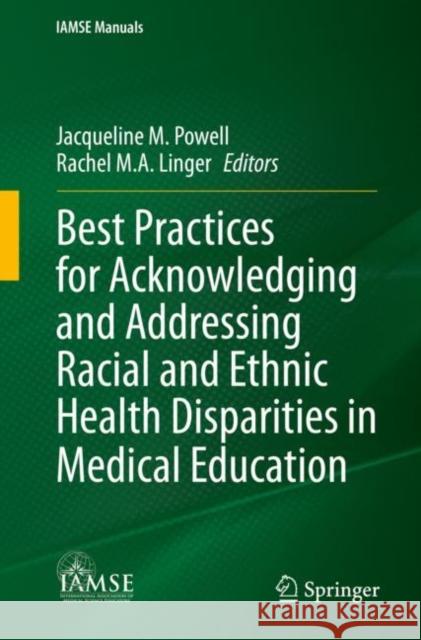Best Practices for Acknowledging and Addressing Racial and Ethnic Health Disparities in Medical Education » książka
Best Practices for Acknowledging and Addressing Racial and Ethnic Health Disparities in Medical Education
ISBN-13: 9783031317422 / Angielski
This manual is an instructional guide to provide healthcare educators with best practices for acknowledging and addressing racial and ethnic health disparities (REHD) in medical education. As a collaborative effort written by both medical students and educators, this manual examines the impact of race, racism, and ethnic biases on medical care and health outcomes.This book enables readers to understand and apply key terms encompassing health disparities, bias, and cultural humility as an approach to demystify stereotypes, social assumptions and long-held misperceptions that influence the misuse of race in medical teachings. By examining the construct of race, differences between race-based and race-conscious medicine are distinguished. As such, medical educators will be guided to consider the effects of socioeconomic differences, environmental factors, and institutional racism between population categories with regard to healthcare compliance and outcomes.Supported by evidence-based recommendations, this manual provides medical educators, curriculum managers, and institutions with strategies and checklists to improve their medical curricula to ensure a well-defined understanding of race and ethnicity in medicine. This book serves as a resource for medical educators and students as they aspire to become more culturally competent, equity-minded, and inclusive healthcare professionals.
This manual is an instructional guide to provide healthcare educators with best practices for acknowledging and addressing racial and ethnic health disparities (REHD) in medical education. As a collaborative effort written by both medical students and educators, this manual examines the impact of race, racism, and ethnic biases on medical care and health outcomes. This book enables readers to understand and apply key terms encompassing health disparities, bias, and cultural humility as an approach to demystify stereotypes, social assumptions and long-held misperceptions that influence the misuse of race in medical teachings. By examining the construct of race, differences between race-based and race-conscious medicine are distinguished. As such, medical educators will be guided to consider the effects of socioeconomic differences, environmental factors, and institutional racism between population categories with regard to healthcare compliance and outcomes. Supported by evidence-based recommendations, this manual provides medical educators, curriculum managers, and institutions with strategies and checklists to improve their medical curricula to ensure a well-defined understanding of race and ethnicity in medicine. This book serves as a resource for medical educators and students as they aspire to become more culturally competent, equity-minded, and inclusive healthcare professionals.











